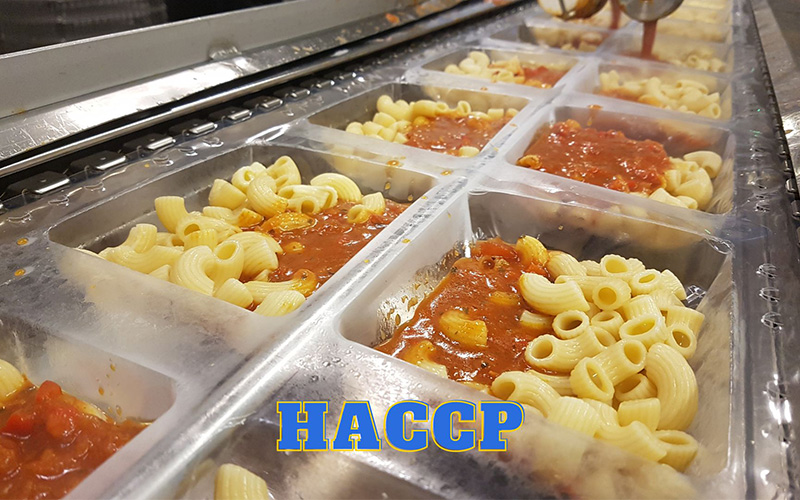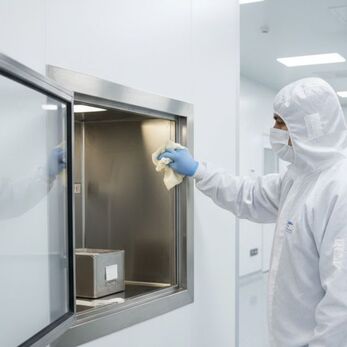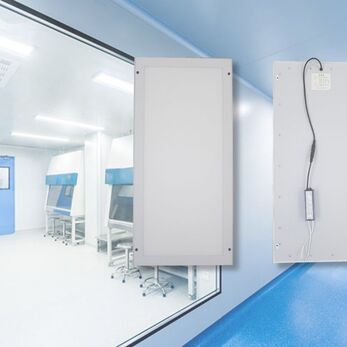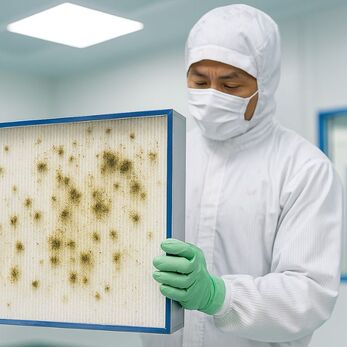What is HACCP? 7 HACCP principles
HACCP, grounded in Hazard Analysis Principles and Critical Control Points, serves as a globally recognized tool for managing food safety risks in the manufacturing process.
What is HACCP?
What does HACCP stand for?
HACCP, is short for Hazard Analysis and Critical Control Points.
HACCP prioritizes prevention over reaction to hazards. It's a prominent system in food manufacturing and serves as the foundation for esteemed standards like the Global Food Safety Initiatives, which include SQF, BRCGS, and FSSC 22000 certifications.
Major retailers and fast-food chains often mandate GFSI-benchmarked food safety certifications from suppliers. Therefore, crafting a HACCP plan is essential for businesses aiming to supply products to these industry giants, ensuring a strong foundation for food safety.
What is it?
Presently, the agri-food sector is experiencing rapid and robust growth across the supply chain, from farm to table. However, not all products and services within this sector ensure food safety and hygiene. Indeed, numerous incidents involving the consumption of contaminated or low-quality products have led to significant health issues for consumers.

Such occurrences jeopardize the reputation and trust of consumers in producers along the entire agri-food supply chain. Hence, one effective solution for businesses in this industry is to implement a food safety management system, with HACCP serving as a fundamental standard and a sturdy framework for enhancing assurance and minimizing risks associated with food safety and hygiene.
HACCP, grounded in Hazard Analysis Principles and Critical Control Points, serves as a globally recognized tool for managing food safety risks in the manufacturing process. Through HACCP, businesses can proactively address issues and mitigate factors that may compromise food safety, thereby ensuring the delivery of genuinely safe and wholesome products to consumers.
HACCP terminology
- Critical Control Point (CCP) – A procedure/practice (control) in food handling/preparation that will reduce, eliminate, or prevent hazards. It is a “kill” step that kills microorganisms or a control step that prevents or slows their growth.
- Hazard – Unacceptable contamination, microbial growth, persistence of toxins, or survival of microorganisms that are of concern to food safety.
- Monitoring – Checking to determine if the criteria established by the critical control point(s) (CCP) have been achieved.
- Risk – Probability that a condition(s) will lead to a hazard.
- Severity – Seriousness of the consequences of the results of a hazard.
Abbreviations:
- HACCP: Hazard Analysis Critical Control Point – a system for identifying, evaluating, and controlling significant food safety hazards.
- GMP: Good Manufacture Practice
- SSOP: Standard Sanitation Operation Program – Standard sanitation program
- CP: Control Point – Point of control
- CCP: Critical Control Point
- CL: Critical Limit – the boundary between acceptable and unacceptable.
Who applies HACCP?
HACCP (Hazard Analysis and Critical Control Points) is applied by a wide range of entities involved in food production, processing, distribution, and handling. This includes:

- Food manufacturers: Companies that produce various food products, ranging from packaged goods to processed meats, beverages, and baked goods.
- Food processors: Facilities that handle, prepare, or transform raw agricultural products into edible food items, such as canneries, slaughterhouses, and dairies.
- Food distributors and wholesalers: Businesses involved in the transportation and storage of food products before they reach retailers or consumers.
- Food service establishments: Restaurants, cafes, catering companies, and other food service providers that handle and prepare food for immediate consumption.
- Retailers: Supermarkets, grocery stores, convenience stores, and specialty food shops that sell food products directly to consumers.
- Regulatory agencies: Government bodies responsible for overseeing food safety and enforcing regulations, such as the Food and Drug Administration (FDA) in the United States and the European Food Safety Authority (EFSA) in Europe.
Overall, any entity involved in the food supply chain can benefit from implementing HACCP principles to ensure the safety and quality of food products.
The importance of HACCP?
The importance of HACCP is proven as it helps control any potential hazards throughout the food production process. By identifying and addressing possible hazards, manufacturers can ensure that their products are safe for consumption.
- The HACCP standard is the foundation of international law and manufacturing practice in all areas related to the food industry.
- This is the basis for authorities to consider and create favorable conditions for businesses in announcing compliance with food hygiene and safety regulations, at the same time reducing inspection frequency for establishments and periodic supervision on shipments.
- This is also the groundwork to help create favorable conditions for businesses in negotiating and signing domestic and export contracts.
What are HACCP benefits?
For Consumers
- Ensure improved health, reduce the risk of foodborne illnesses, and enhance quality of life.
- Increase confidence and peace of mind when using food products.
- Enhance awareness of food hygiene.

For Government
- Improve food control effectiveness.
- Boost public trust in the quality of provided food.
- Protect and improve community health.
- Reduce costs associated with food poisoning treatment and illness caused by unsafe food.
- Create favorable conditions for commercial development.
For the Businesses
- Increase productivity, reduce production costs, and minimize product losses due to pre-identified food safety hazards, covering all production processes from raw materials to processing, and distribution; and measures to control them effectively identified. Hence, limit product spoilage, recall products, reduce production costs, and costs associated with addressing issues caused by unsafe products.
- Enhance customer and regulatory agency trust.
- Complement quality management systems well. Improve the dynamism, responsibility, and job understanding of the staff.
- Achieve international recognition, protect product brands, enhance competitiveness and marketing, increase business opportunities, and food exports.
The basic structure of HACCP
The basic structure of HACCP is divided into 10 parts:
- Target
- Scope of application and definition
- Initial phase
- Facility: Design and means
- Operational control
- Facility: Maintenance and cleaning
- Facility: Personal hygiene
- Transportation
- Product information and consumer insights
- Training

HACCP 7 principles
The HACCP (Hazard Analysis Critical Control Point) system typically consists of seven core principles that form its structure:
- Conduct Hazard Analysis: Identify and assess potential hazards associated with the food production process. This includes biological, chemical, and physical hazards that could harm consumers if not controlled.
- Determine Critical Control Points (CCPs): Identify the points in the production process where control measures can be applied to prevent, eliminate, or reduce hazards to acceptable levels.
- Establish Critical Limits: Establish specific criteria and limits for each CCP to ensure that hazards are effectively controlled. Critical limits are often based on regulatory standards, industry guidelines, or scientific research.
- Monitor CCPs: Implement monitoring procedures to ensure that CCPs are operating within critical limits. Monitoring involves regular observation, measurement, or testing of parameters to verify control.
- Establish Corrective Actions: Develop procedures to be followed when monitoring indicates that a CCP is not under control. Corrective actions aim to identify and address deviations from critical limits, prevent unsafe products from reaching consumers, and restore control to the process.
- Verify the System: Establish verification procedures to confirm that the HACCP system is working effectively. Verification involves reviewing records, conducting audits, and testing procedures to ensure compliance with HACCP principles.
- Maintain Records: Keep detailed records of all aspects of the HACCP system, including hazard analysis, CCPs, critical limits, monitoring results, corrective actions, and verification activities. Records serve as evidence of compliance and provide a basis for continuous improvement.

These seven principles provide a systematic approach to food safety management, helping food businesses identify and control hazards throughout the production process to ensure the safety of their products.
Which special process requires a HACCP plan?
Certain facilities may employ non-thermal methods, such as brining or curing, to prepare or preserve food. Special processes of this nature necessitate the implementation of a HACCP plan and/or variance at your facility. The information within your plan mirrors that of non-special processes detailed earlier.

Examples of such special processes requiring a HACCP plan include:
- Curing using nitrites or nitrates
- Preservation of fruits or vegetables with vinegar
- Reduced oxygen packaging
- Smoking of meat, fish, or other food items
- Curing of meat or other food products
- Acidification
- Utilization of a live holding tank for shellfish
For specific guidance, refer to local regulations.
Integrate HACCP with ISO 22000
HACCP can function independently as a management tool within your business or be combined with other management systems, such as ISO 22000 Food Safety Management. By integrating HACCP with ISO 22000, you can benefit from shared requirements for controlling food safety risks, streamlining your management and delivery of common processes.



















